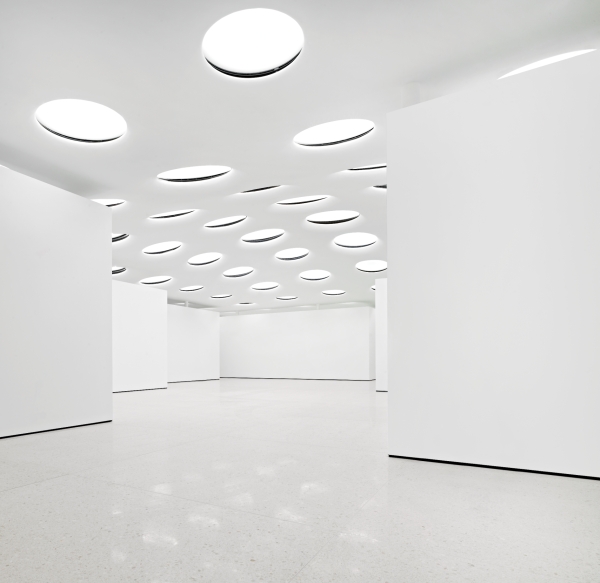
What’s to be done when a museum can’t relocate? When it wants to remain in the heart and soul of the city? When green spaces should be preserved? When every possibility for expansion appears to be exhausted? Then go underground – and almost double your floor area.
The Städel Museum in Frankfurt am Main, built in 1878 and one of the most important art museums in Germany, solved all its needs in a very discreet manner; they relocated beneath the ground. Instead of somber exhibition rooms, there are now bright, subterranean halls along Frankfurt’s popular riverside "Schaumainkai" which give a successful impression of vastness and – very important for an art museum allow in the right amount of natural light from above.
A well-formed solution: light domes as an architectonic design element
The central design element in the concept devised by Frankfurt architectural practice Schneider + Schumacher: 195 ground-level skylights with an axis grid of 3.70m x 3.70m and diameters from 1.50m to 2.50m which reflect the topography of the existing garden.
Through the use of these vaulted glass elements, there is now a green area out – side featuring a remark able design directly above a new 3,000m² under ground exhibition area.
Illumination concept
The multiple light domes with their spherical, cold-bent, insulating glass discs break through the self-supporting and slightly bulbous ceiling of the subterranean exhibition hall beneath. In so doing, they provide natural light while at the same time being a source of artificial light – with a ring of warm white combined with cool white LED elements.
Art in and within the building
Every single light dome is a work of art in its own right: here a two-ply membrane tensioning concept was applied using SEFAR Architecture IA-80-CL Fabric. Depending on the diameter of the light dome, the two fabric layers are pre- tensioned with the help of a strong, circumferential, 4mm carbon bar and between 18 and 28 springs. The upper membrane protects the element from dirt and the lower one functions as a diffuser.
In addition to all this, the light-technical and acoustic PVDF fabric is over 80% lighttransmissive and can conceal accent lighting, diffuse lighting, LEDs, and dimmer elements, as well as protecting the exhibits from too intensive sunlight. For cleaning and maintenance purposes, every light dome can be accessed in no more than five minutes.
Natural artificial light
A deciding factor when choosing SEFAR Architecture Fabric was its high diffused light ratio and minimal color shifting. As a result, the exhibits always appear balanced, true to the original, and carefully illuminated irrespective of the actual lighting conditions outside. Based on the amount of natural light available and tailored to the requirements of the artwork on display, the light management system selects the maximum setting and adjusts the level of artificial light from the skylights.

